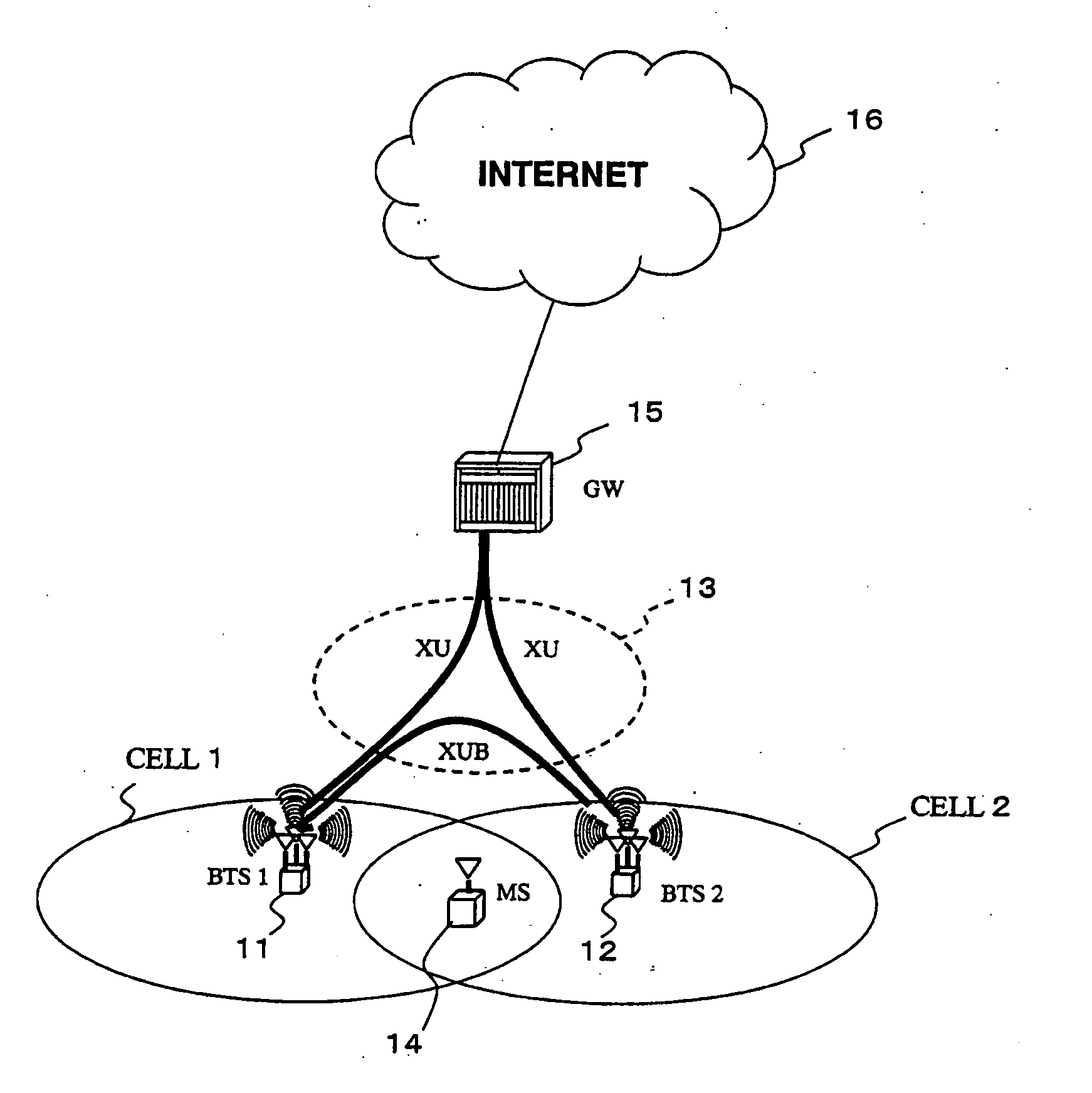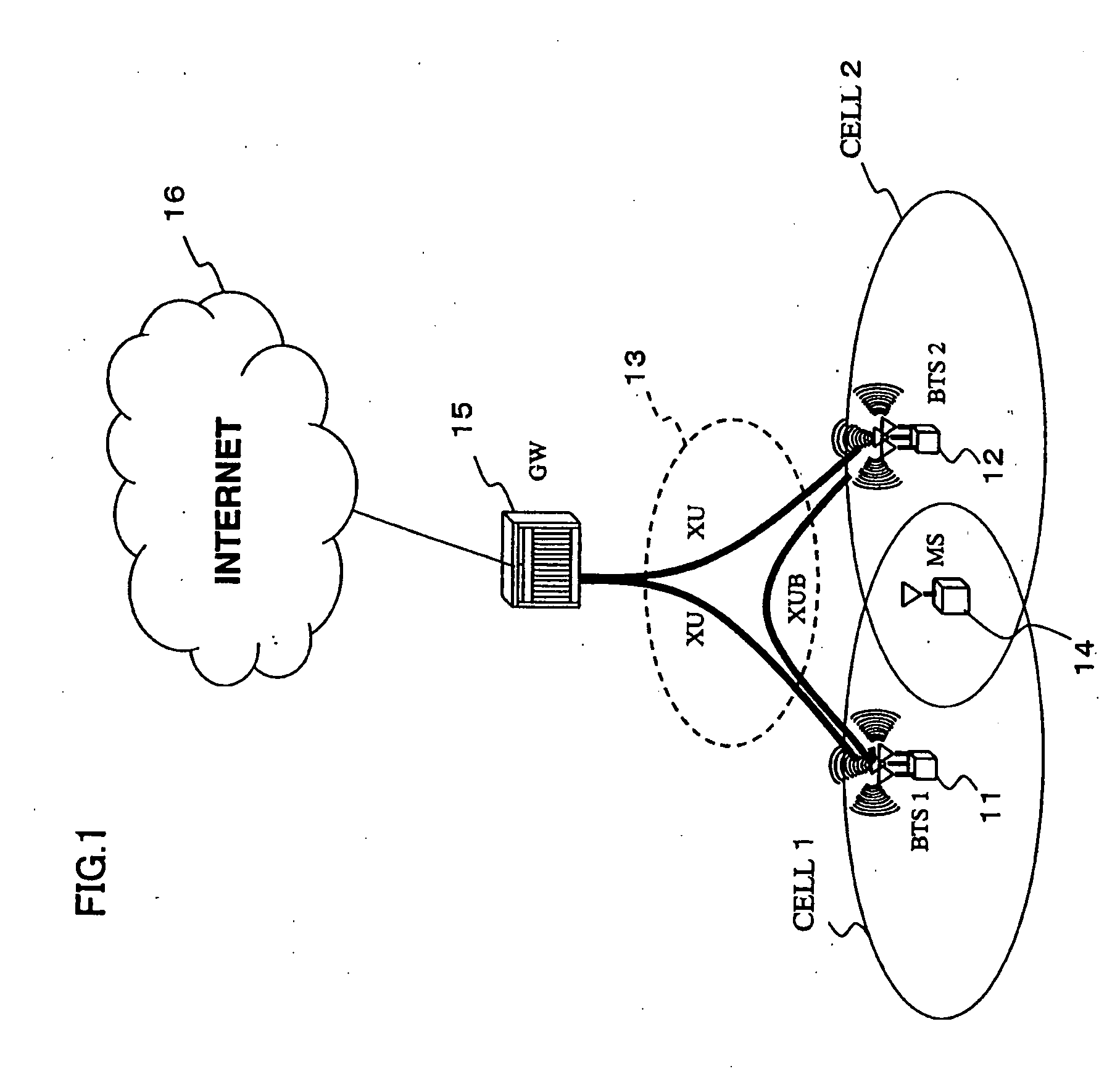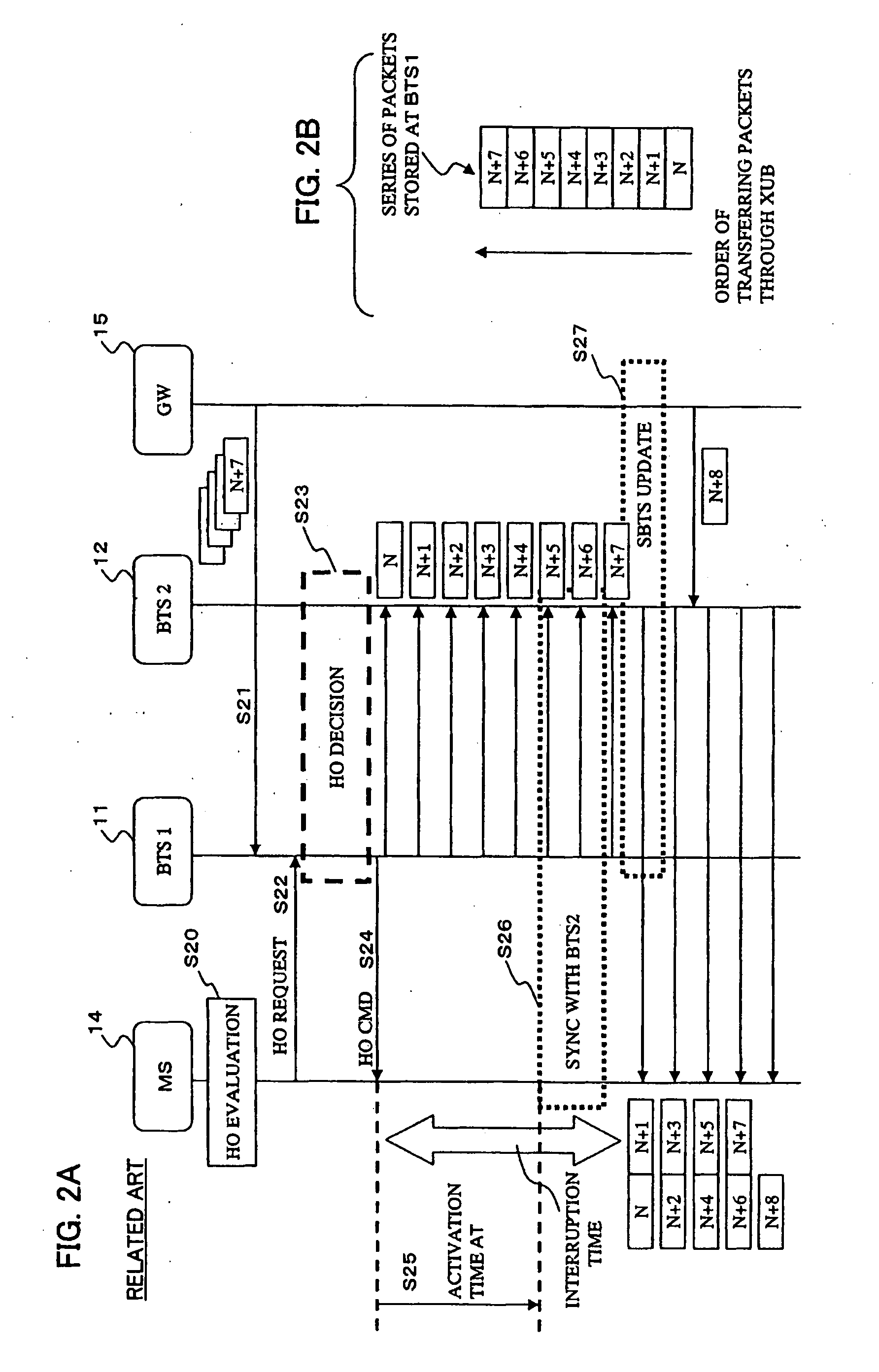Method and system for transmitting data in mobile communications system
a mobile communication system and data transmission technology, applied in the field of mobile communications systems, can solve the problems of affecting the user's usability, affecting the user's feeling of usability, and not always fully receiving all parts of the base station, so as to reduce the amount of data transferred, shorten the duration of communication interruption, and prevent the effect of data transfer between base stations
- Summary
- Abstract
- Description
- Claims
- Application Information
AI Technical Summary
Benefits of technology
Problems solved by technology
Method used
Image
Examples
first embodiment
5. First Embodiment
[0099]FIG. 7 is a sequence diagram showing procedures for handover and downlink data transmission according to the first embodiment of the present invention. First, when the strength of a radio signal received from the current serving base station 11 becomes lower, the mobile station 14 evaluates the necessity of a handover (S401) and searches for a new connectable base station. As a result of the search, the mobile station 14 makes a handover (HO) request to the base station 11, for new connection to the base station 12 (S403). At this point in time, it is assumed that the base station 11 has received from the gateway 15 packets D(N) to D(N+7) destined for the mobile station 14, which have been stored in the buffer section 301 (S402).
[0100] When the mobile station 14 sends the HO request to the serving base station 11, the respective HO controllers 304 of the base station 11 and the target base station 12 make mutual handover adjustment for the mobile station 14...
second embodiment
6. Second Embodiment
[0110]FIG. 8 is a sequence diagram showing procedures for handover and downlink data transmission according to the second embodiment of the present invention. First, when the strength of a radio signal received from the current serving base station 11 becomes weaker, the mobile station 14 evaluates the necessity of a handover (S401) and searches for a new connectable base station. As a result of the search, the mobile station 14 makes a HO request to the base station 11, for new connection to the base station 12 (S403). At this point in time, it is assumed that the base station 11 has received from the gateway 15 packets D(N) to D(N+7) destined for the mobile station 14, which have been stored in the buffer section 301 (S402).
[0111] When the mobile station 14 sends the HO request to the serving base station 11, the respective HO controllers 304 of the base station 11 and the target base station 12 make mutual handover adjustment for the mobile station 14 to deci...
third embodiment
7. Third Embodiment
[0119]FIG. 9 is a sequence diagram showing procedures for handover and downlink data transmission according to the third embodiment of the present invention. First, when the strength of a radio signal received from the current serving base station 11 becomes weaker, the mobile station 14 evaluates the necessity of a handover (S401) and searches for a new connectable base station. As a result of the search, the mobile station 14 makes a HO request to the base station 11, for new connection to the base station 12 (S403). At this point in time, it is assumed that the base station 11 has received from the gateway 15 packets D(N) to D(N+7) destined for the mobile station 14, which have been stored in the buffer section 301 (S402).
[0120] When the mobile station 14 sends the HO request to the serving base station 11, the respective HO controllers 304 of the base station 11 and the target base station 12 make mutual handover adjustment for the mobile station 14 to decide...
PUM
 Login to View More
Login to View More Abstract
Description
Claims
Application Information
 Login to View More
Login to View More - R&D
- Intellectual Property
- Life Sciences
- Materials
- Tech Scout
- Unparalleled Data Quality
- Higher Quality Content
- 60% Fewer Hallucinations
Browse by: Latest US Patents, China's latest patents, Technical Efficacy Thesaurus, Application Domain, Technology Topic, Popular Technical Reports.
© 2025 PatSnap. All rights reserved.Legal|Privacy policy|Modern Slavery Act Transparency Statement|Sitemap|About US| Contact US: help@patsnap.com



